Ultimate Flowering Alliums: 8 Ornamental Alliums For Every Garden
From sparkly firework shapes to mammoth spherical displays, ornamental alliums stand proud. Here are eight of the best flowering alliums for every border

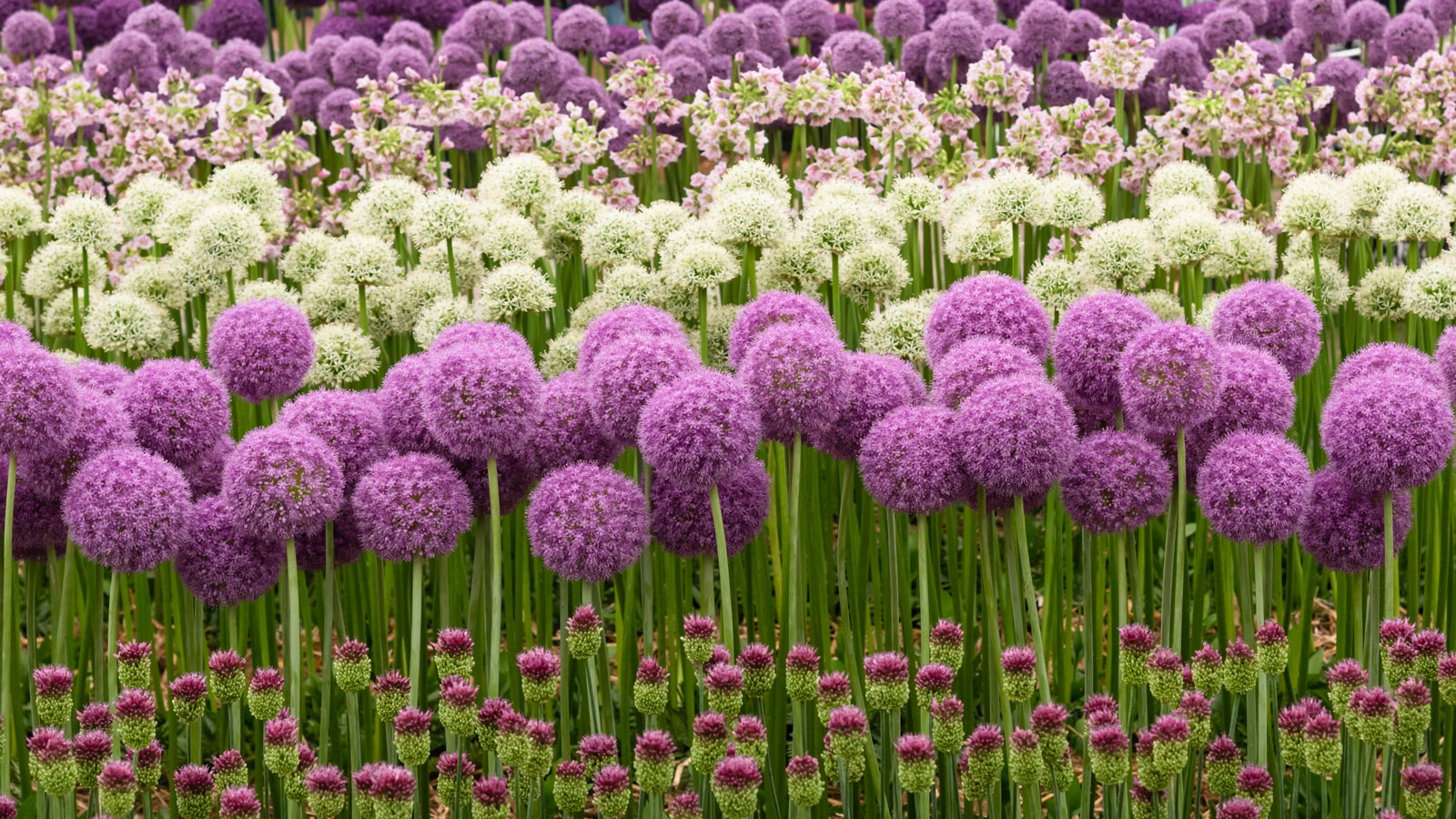
A favorite of flying pollinators, flowering alliums are popular because of their dependability and unique flower forms. The diversity within the genus gives us many choices for dynamic garden spaces and mixed borders, blooming throughout late spring and early summer.
For anyone interested in growing alliums, these plants are easy to grow and an ideal plant for gardeners of any skill level. Here, we round up several of the most popular ornamental alliums and detail some of their special characteristics.
8 Best Flowering Alliums To Try
Though there are some variations among species, rounded allium flower types are often most familiar to gardeners. These clustered blooms consist of hundreds of smaller, individual flowers called florets. Ornamental allium varieties such as these are noted for their height, sturdy stems, and tremendous appeal.
Though the color range of the genus isn’t extensive, you can expect open buds to reveal stunning flowers in shades of purple, pink and white. To help with managing flowering alliums, these selections are straightforward and easy going in a range of gardens.
1. Drumstick
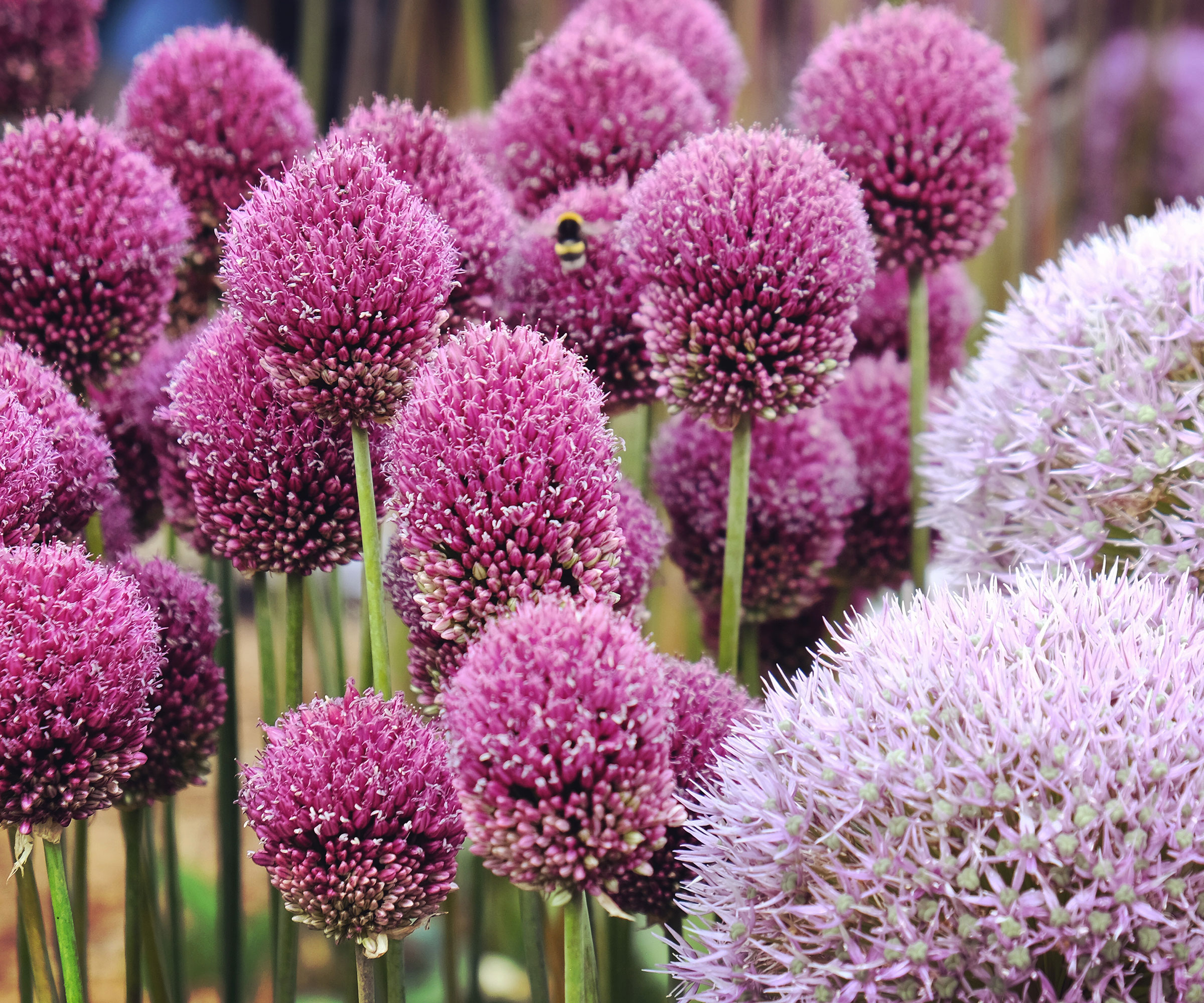
Among the most popular small allium varieties, A. sphaerocephalon makes an excellent addition to borders as well as in containers. Small, egg-shaped blooms sit atop long stems, making Drumstick alliums useful in interplanting. Blooms open over the course of several weeks, persisting in the garden throughout summer until they are deadheaded or allowed to produce seed.
2. Globemaster
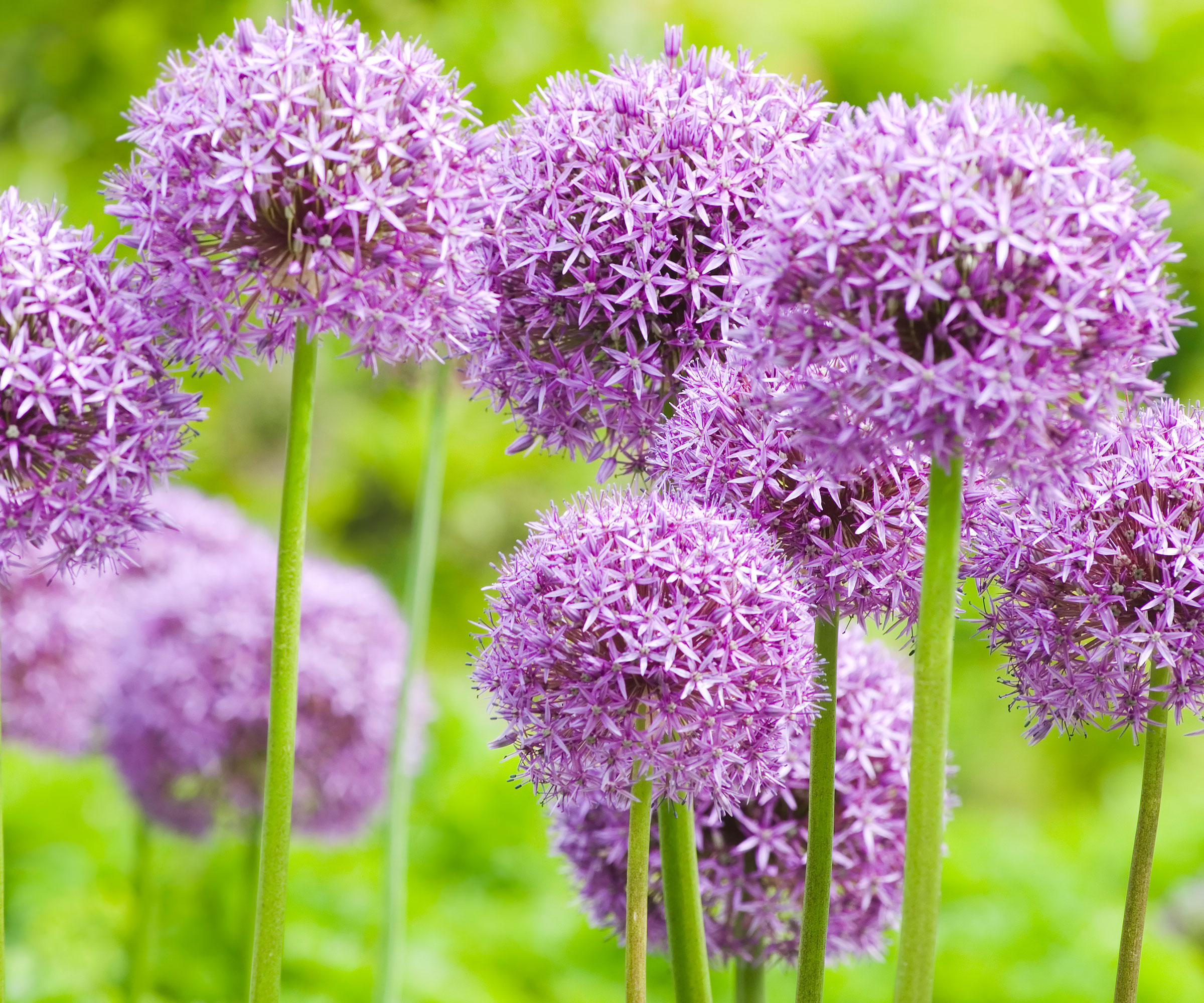
Immensely showy variety Globemaster leaves a lasting impression with its large composite blooms of hundreds of individual purple florets. These highly saturated flowers serve a wide range of purposes and make excellent plants to grow for structure, adding flair to the landscape as well as enticing pollinators. Hardy to USDA zones 3-9, expect this fragrant perennial to return seasonally with only a little care.
3. Graceful Beauty
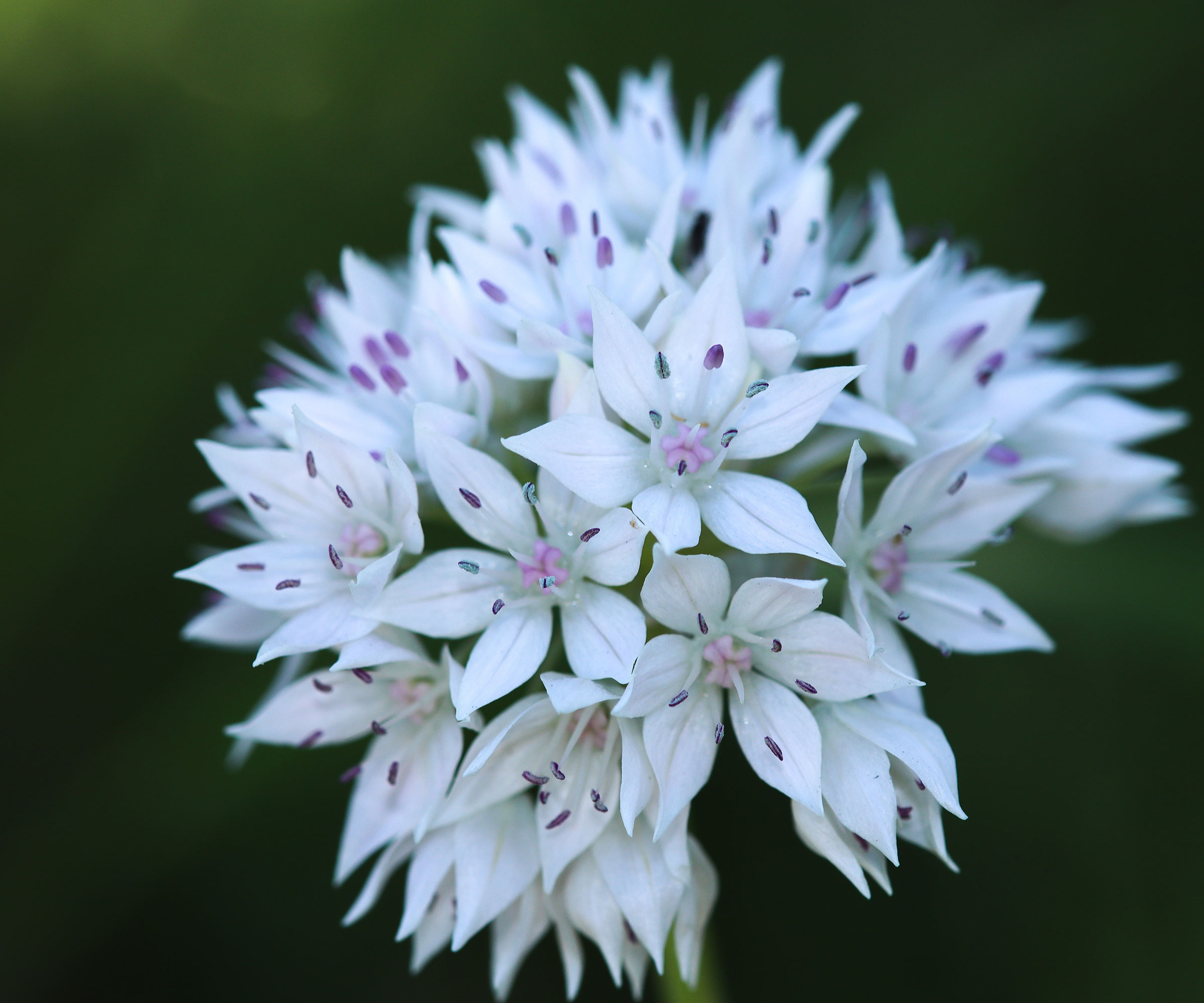
Reaching a height of only 12 inches (30cm), Graceful Beauty is a great choice for container gardens and ground cover. Each summer, elegant white-pink flower heads rise above its grassy foliage. As a native species, this cultivar is well-suited across much of the United States, demonstrating both hardiness and resistance to disease.
Sign up for the Gardening Know How newsletter today and receive a free copy of our e-book "How to Grow Delicious Tomatoes".
4. Millenium
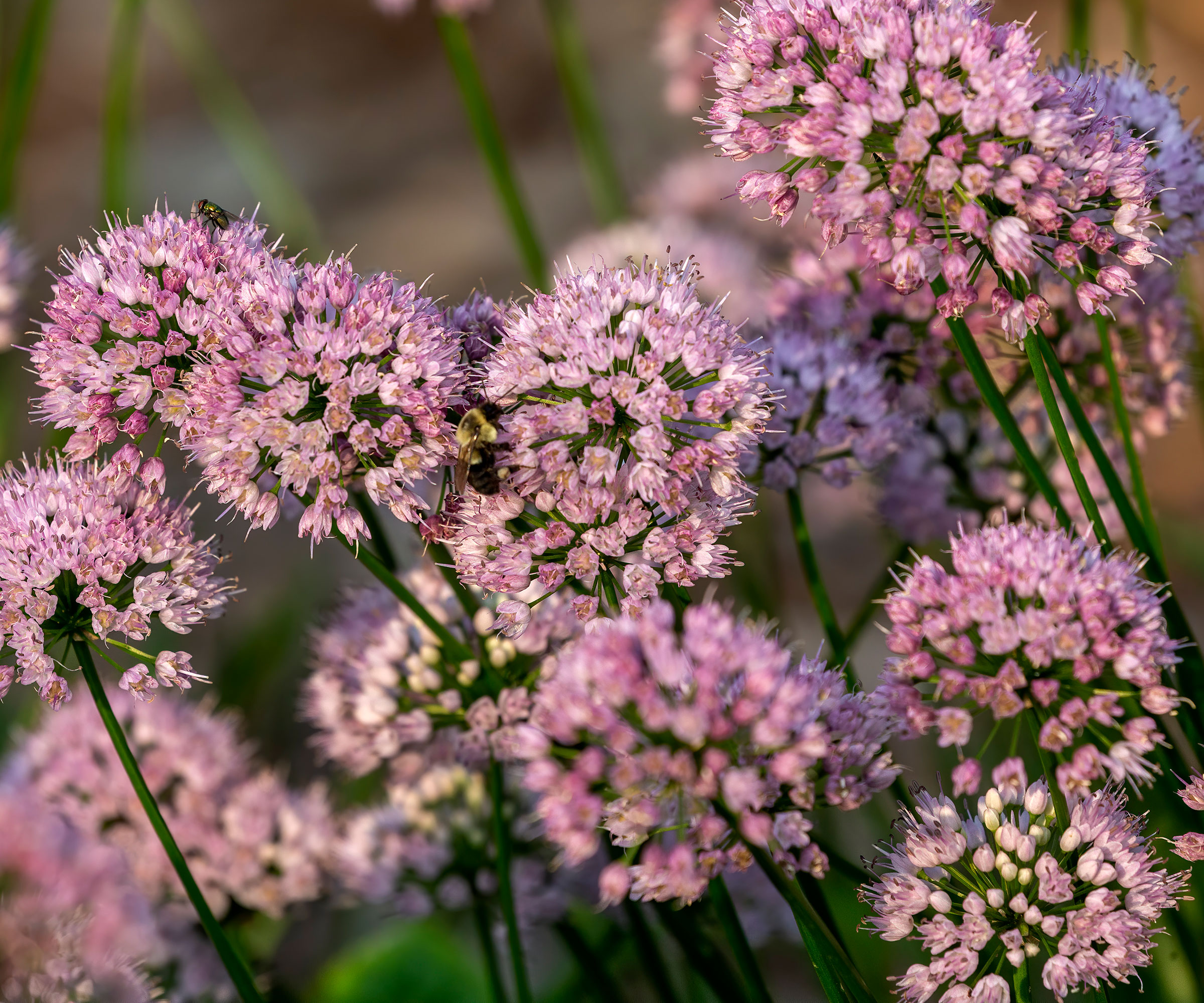
Often considered one of the best flowering allium varieties, Millenium is frequently grown as a focal plant in dramatic mixed garden borders and small beds. The plant's compact nature lends itself to dense plantings, adding substantial ornamental value to unfavorable spaces. The fragrant purple flowers are attractive to bees, butterflies and a wide range of other beneficial insects. Millenium is hardy to USDA zones 4-8.
5. Persian Blue
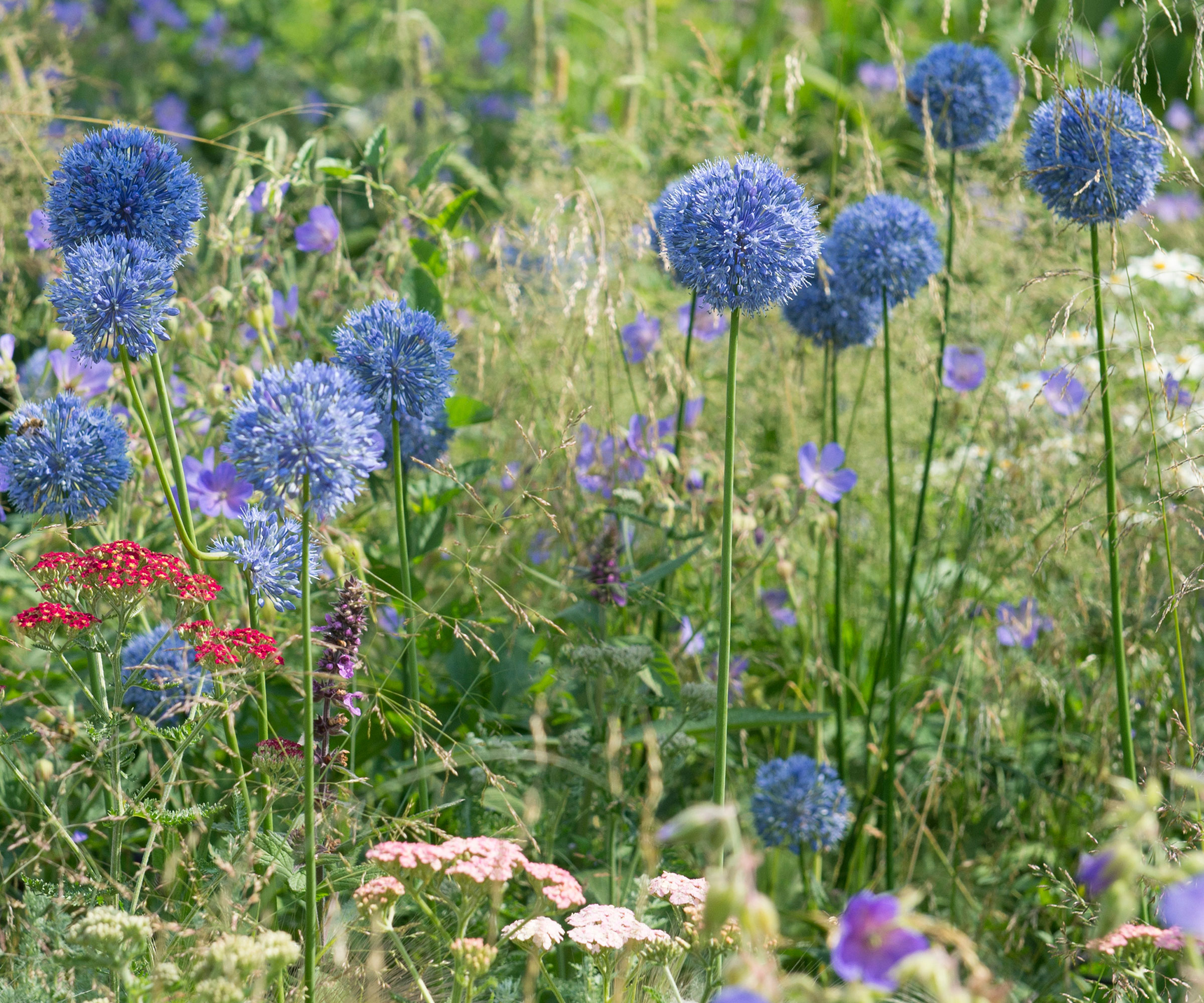
Persian Blue alliums are prized for their alluring purple-blue color, often seen as a rarity in the world of flowers. Rising atop wiry stems, these summer buds persist, remaining in bloom for several weeks. This cultivar is considered quite robust, as it’s highly resistant to disease and only seldom affected by browsing wildlife or pests.
6. Purple Sensation
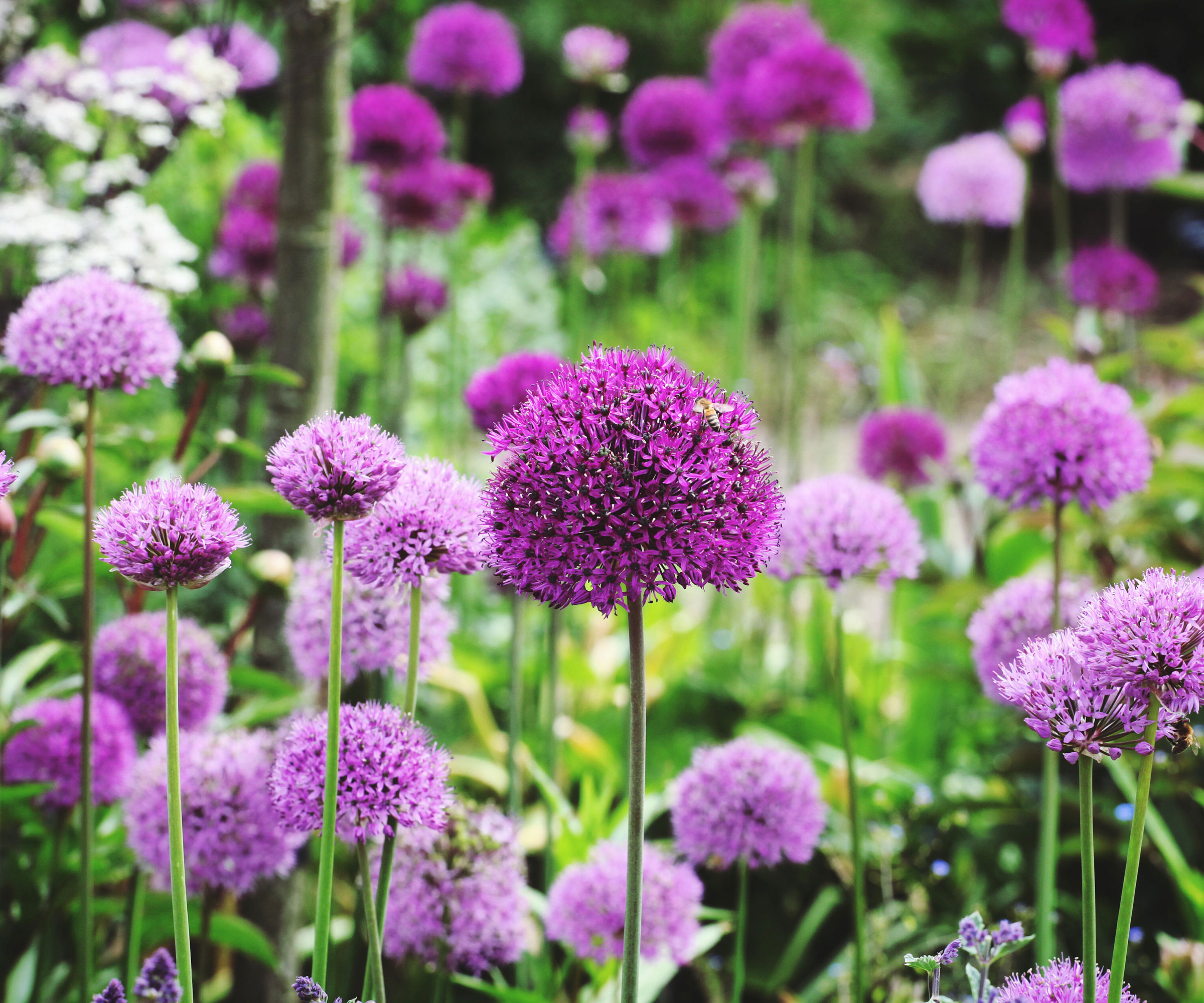
A. hollandicum (aka A. aflatunense) is among the most common types of flowering alliums found at garden centers. Its composite flowers stand tall, reaching 24 inches (61cm) when in bloom. Large, purple flowers add beauty to a variety of spaces, from modern minimalist themes to cottage garden displays, water-wise landscapes and partly shaded beds. Experienced growers suggest planting four bulbs per square foot (0.092903m). Purple Sensation is hardy to USDA zones 3-9.
7. Silver Spring
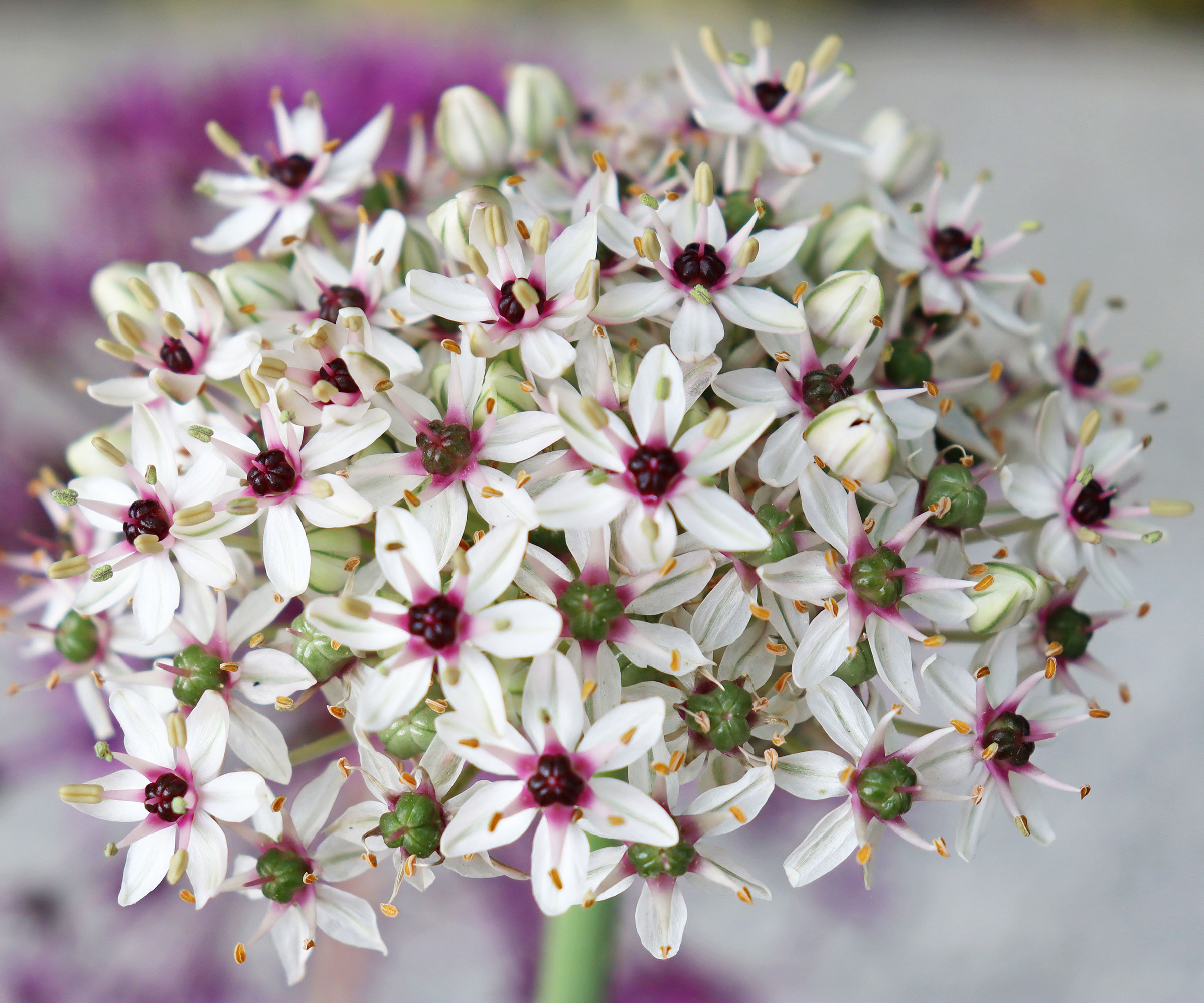
Noted for its high ornamental value, Silver Spring is one of the most dramatic types of allium flower with its impressive color and distinctive appearance. White petals open to reveal splashes of bright purple, giving each floret dimension and depth. This variety has a delicate fragrance said to resemble honey or licorice. These flowers are best planted near porches, on patios or in large containers.
8. White Giant
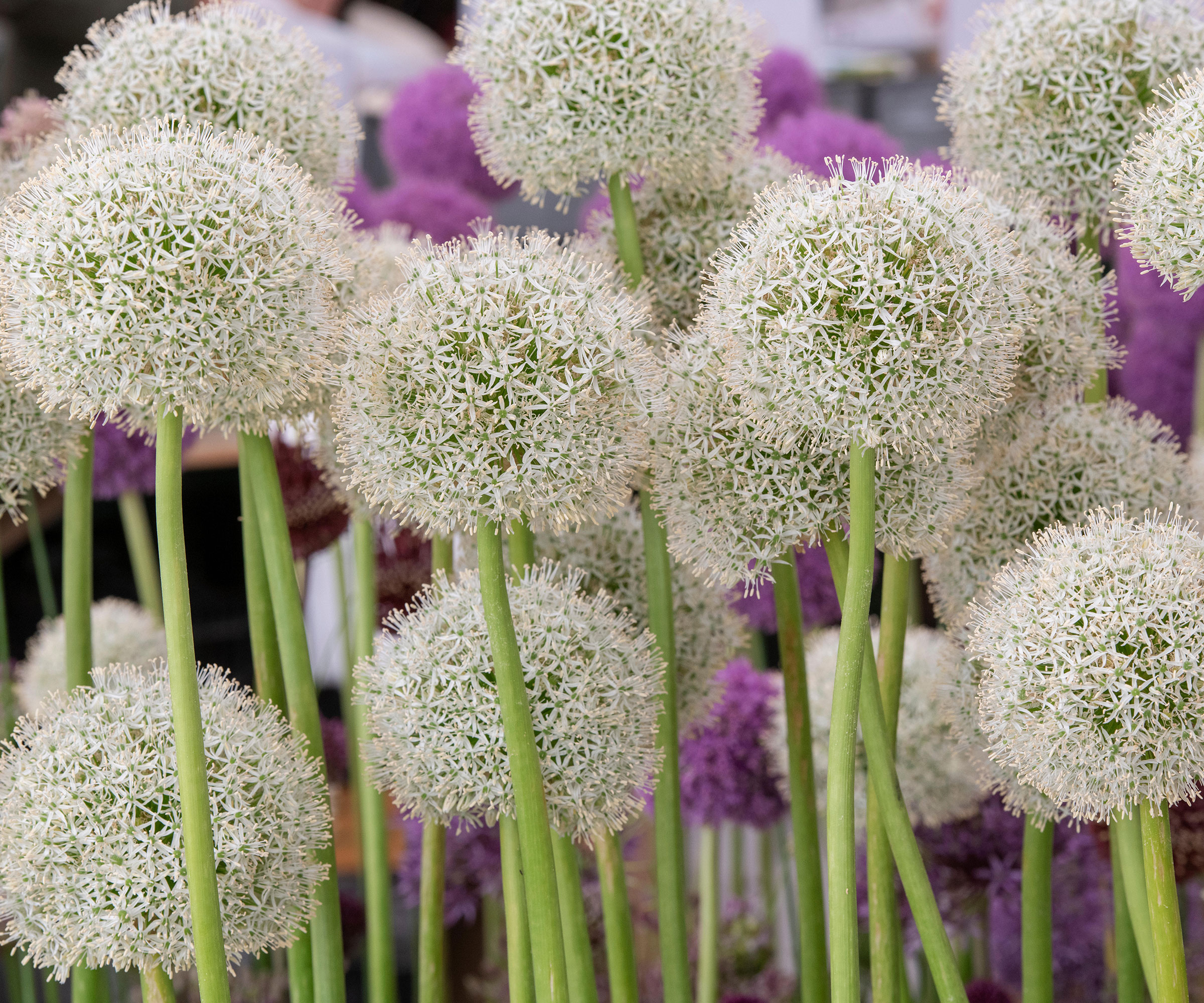
A. stipitatum stands out among other species of allium for a variety of reasons. Its lush foliage often serves as an early-season groundcover in mixed beds until it produces flowers. For anyone looking to enhance a white flower theme, borders can be accentuated with an abundance of these pristine flower heads. The dried, faded flowers offer continued ornamental appeal, remaining the duration of the season. Easy to grow, White Giant is hardy to USDA zones 5-8.
Frequently Asked Questions
Where is the Best Place to Plant Flowering Alliums?
Allium plants grow best where they are able to receive full sun throughout the day. Good drainage is also key, as most species will not tolerate wet or waterlogged soils. Beyond planting, alliums require only a little care, but may need support. This is especially true of taller allium flower types, which can benefit from staking or positioning in a more sheltered location.
Do I Cut Down Alliums After Flowering?
Cutting back or deadheading allium flowers is not essential. However, plants can benefit from the process. In terms of understanding the best post-bloom care for alliums, deadheading prevents the production of seed. This allows the plants to divert their energy into growth.
Which Alliums Bloom All Summer?
Most alliums will begin to bloom in late spring and continue into summer. Choosing long-lasting varieties with flowers that open over the span of several weeks often results in the best floral display.

Tonya Barnett has been gardening for 13 years. Flowers are her passion. She has transformed her backyard into a cut flower garden, which she regularly chronicles on her YouTube channel http://www.youtube.com/@tonyawiththeflowers.